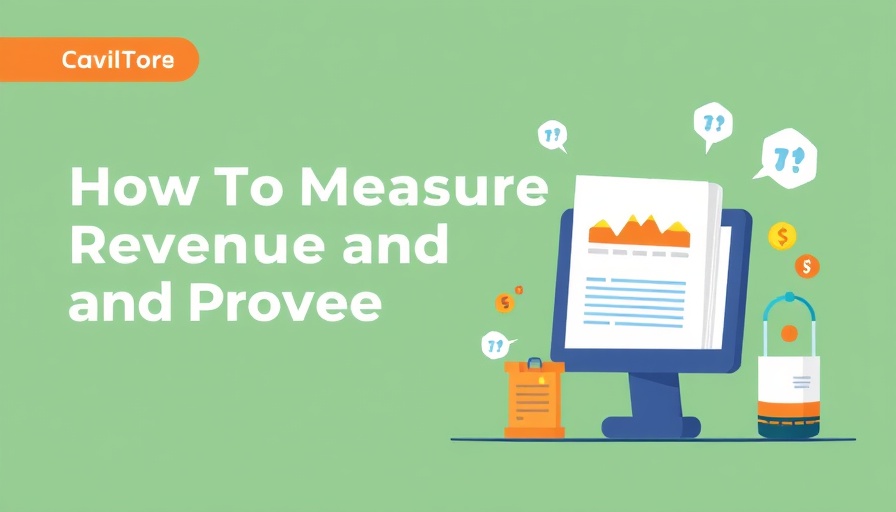
How to Measure Content Revenue Effectively
In the realm of content marketing, the stakes have never been higher. With businesses increasingly driven by the dual pressures of creating compelling content and justifying its return on investment (ROI), the ability to measure content revenue is becoming essential. As stakeholders grow weary of traditional SEO reports centered around clicks and traffic, the call for tangible financial metrics is louder than ever. It's critical for marketers to adopt a framework that showcases the true value of content in terms of revenue generation.
The Shift from Clicks to Cash: Understanding Content Value
Many SEO reports boast impressive statistics like “25% more traffic,” but what truly matters is the impact on the bottom line. Senior stakeholders in an organization want to see how content drives real revenue. This perspective emphasizes the necessity of shifting the focus from traditional metrics that might seem significant to internal teams, toward business outcomes that executives prioritize. Essentially, clicks don’t equal value; what matters is how those clicks translate into revenue.
Why Conversion Quality Trumps Quantity
When considering conversions, not every transaction is equally valuable. A simple one-off purchase may appear favorable at first glance, but a recurring subscription derived from that initial sale adds consistent value for the future. By measuring the long-term potential of customer relationships—factoring in lifetime value and retention rather than merely counting how many sales closed—marketers can more accurately evaluate performance. This comprehensive approach helps organizations make informed decisions on scaling content resources effectively.
The Hidden Costs of High-Traffic Pages
An often-overlooked aspect of content measurement is the associated costs of high-traffic pages. Just because a page garners significant attention does not guarantee profitability. Every click can incur server and bandwidth costs, and if the page does not convert visitors into paying customers, it may actually harm the business financially. Understanding the ROI of each content piece is crucial to prevent unnecessary expenditures on content that does not yield revenue.
Looking Ahead: Insights and Opportunities
The landscape of digital marketing is poised for continued transformation as businesses strive to align their content strategies with revenue goals. Marketers should not only focus on constructing engaging stories but also on enhancing their ability to quantify success through the lens of financial metrics. Embracing tools that can track conversions accurately and assess customer lifetime value presents a significant opportunity for businesses to identify what content truly drives profitability.
 Add Row
Add Row  Add
Add 




Write A Comment